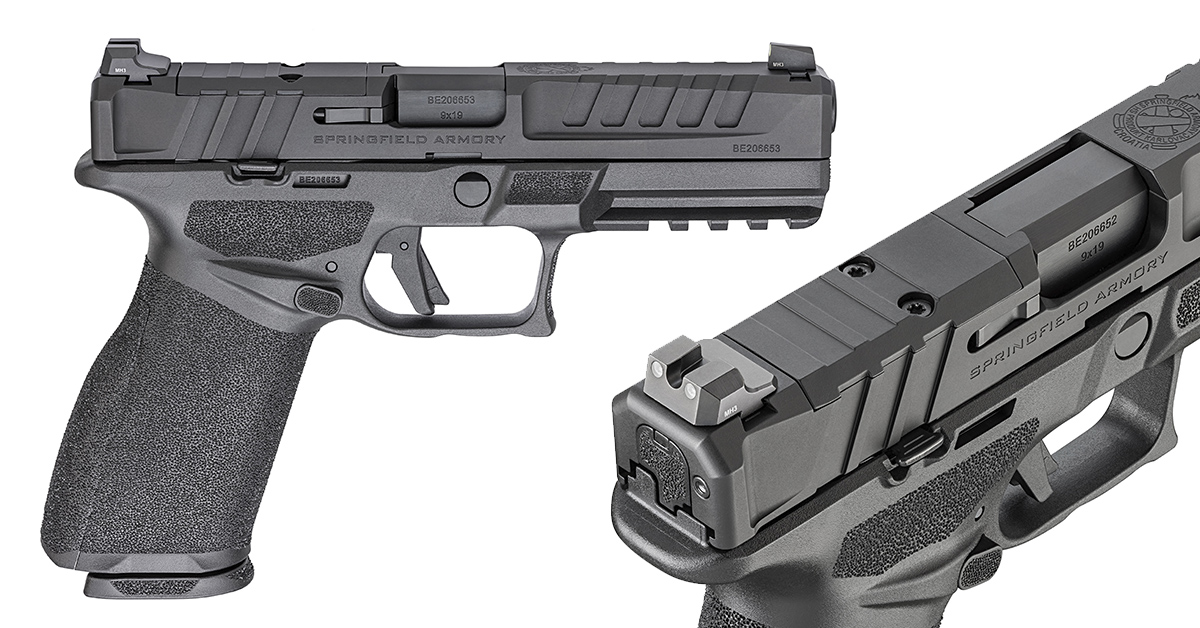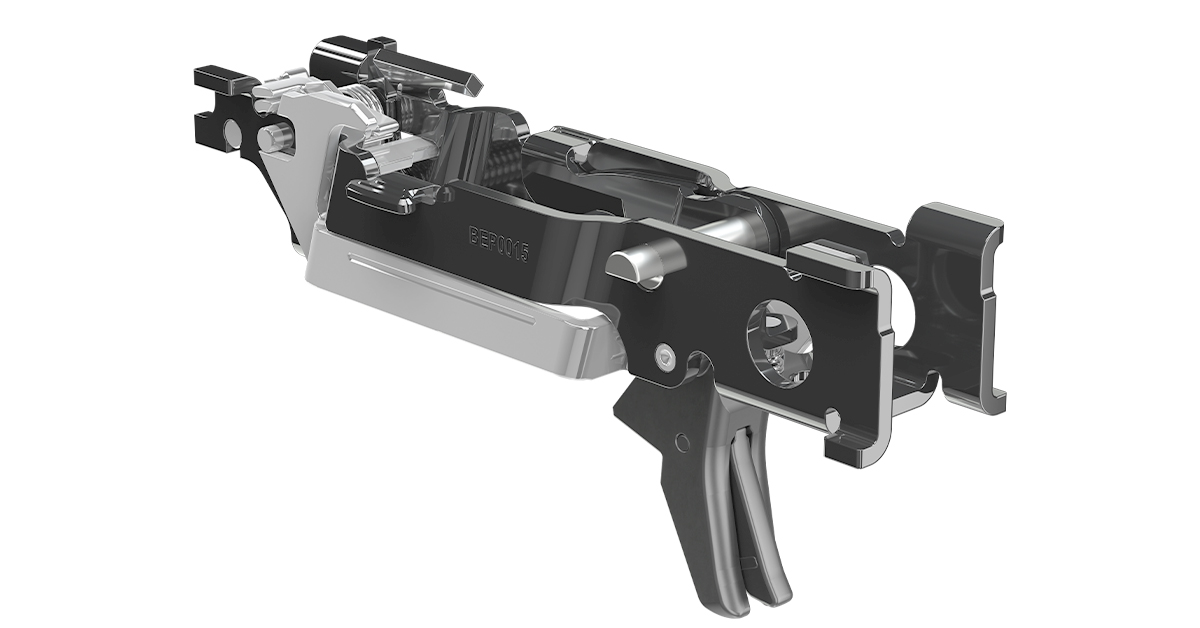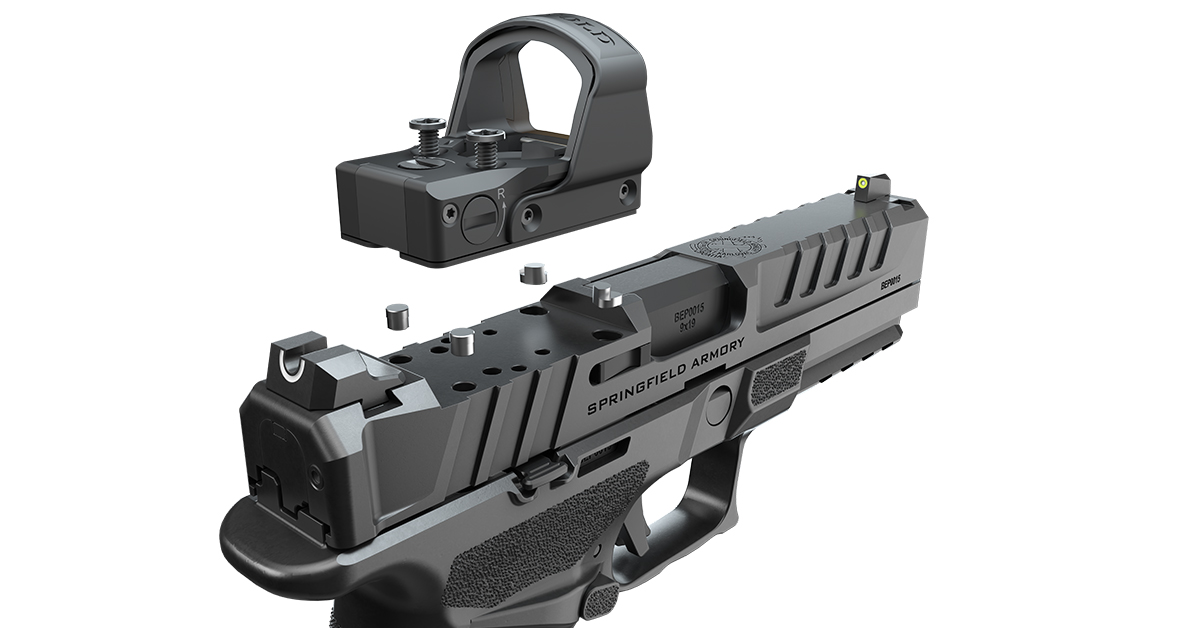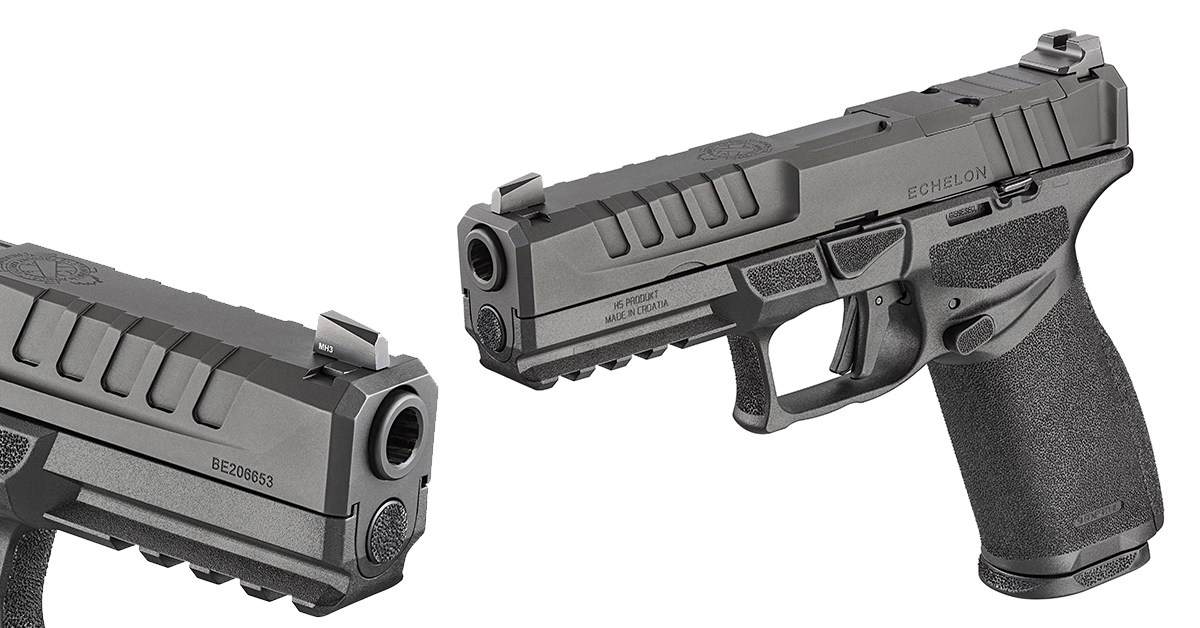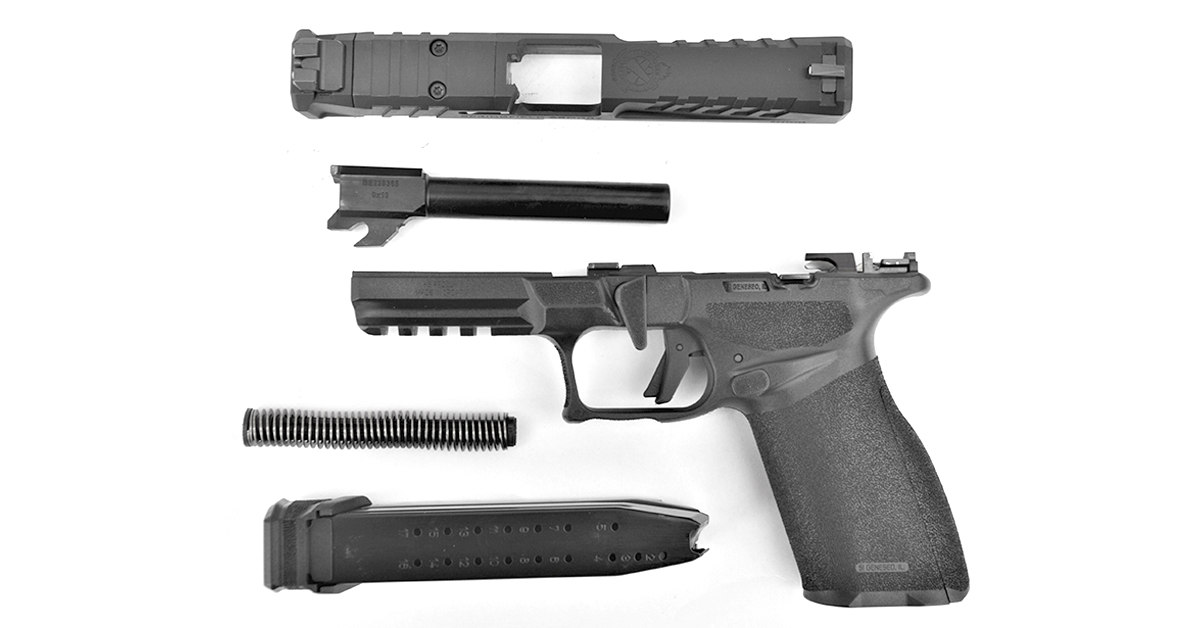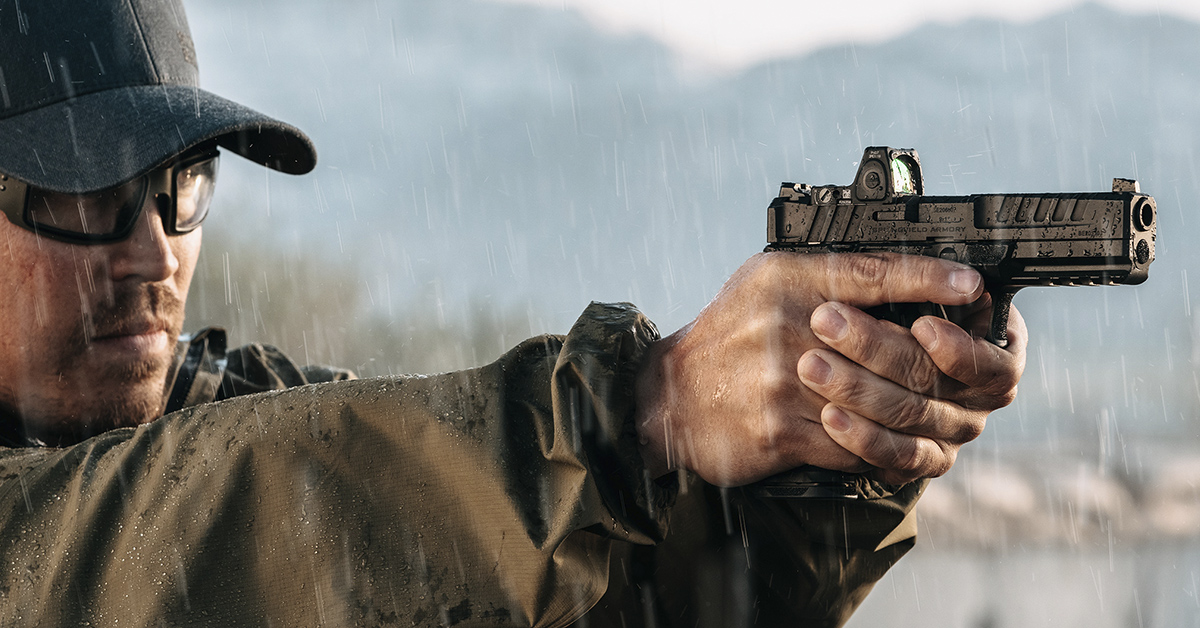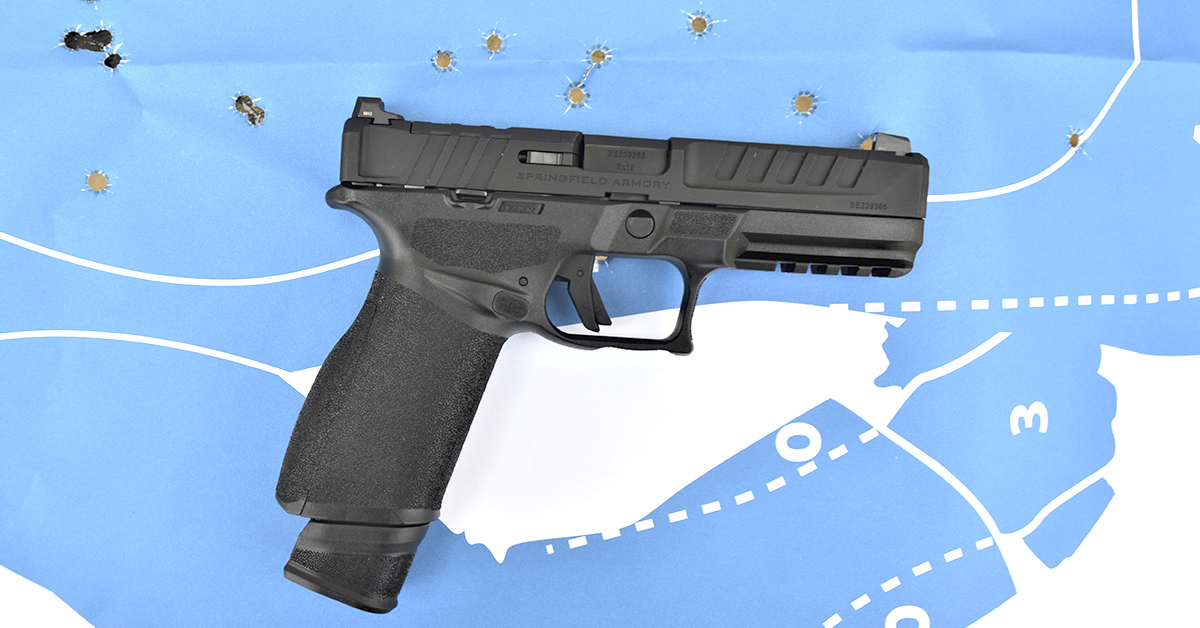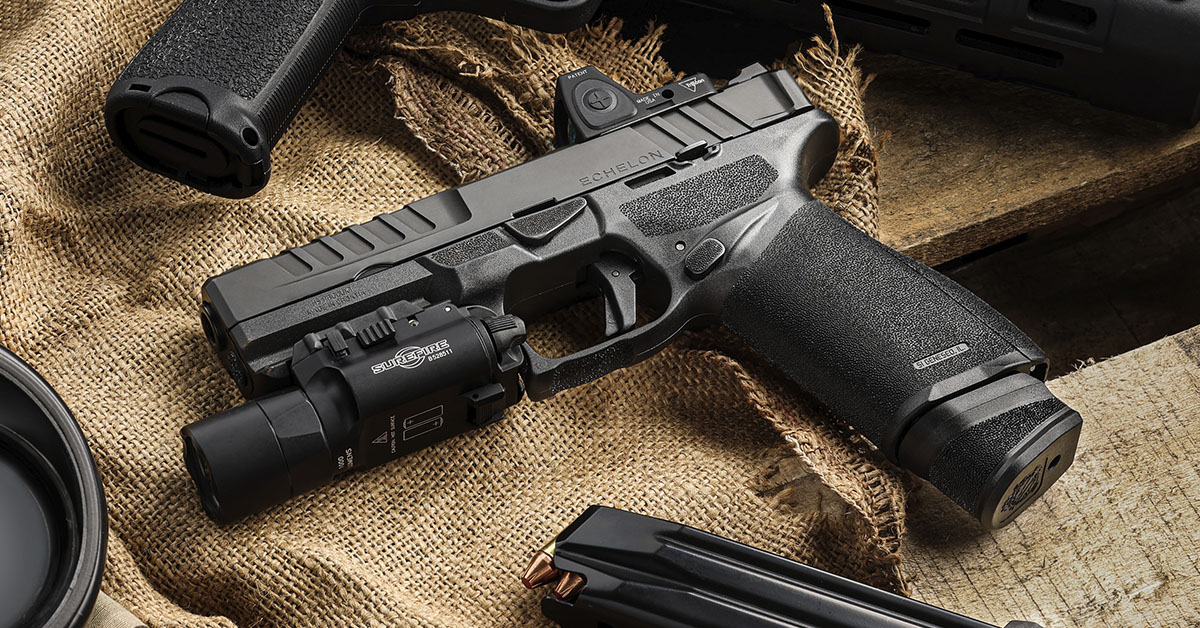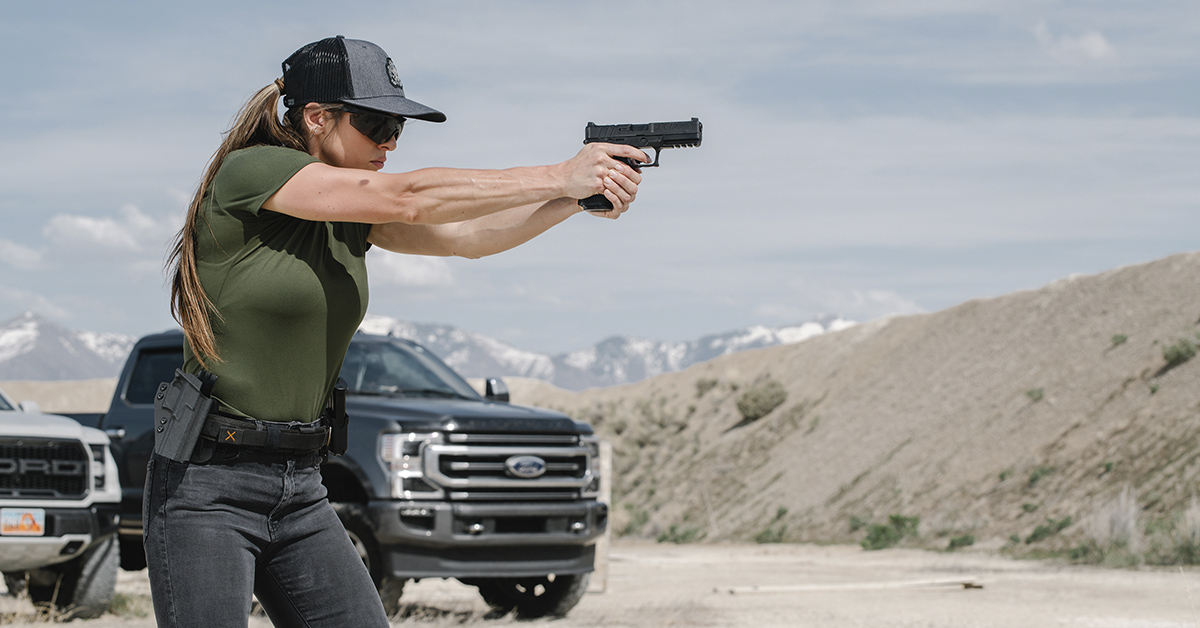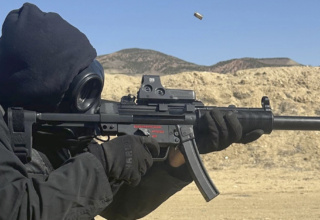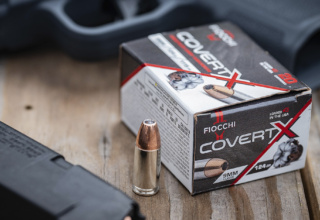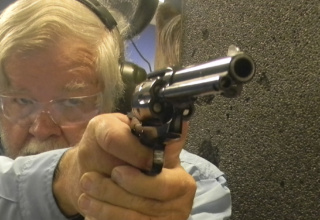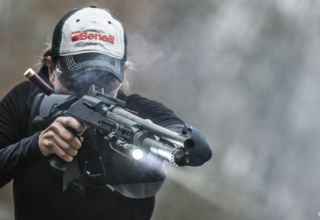“Better than a GLOCK!” says our seasoned handgun guru. While aimed at the law-enforcement set, the Echelon 9mm from Springfield Armory sets a new benchmark in defensive handgun performance for the civilian market.
by Bob Campbell
I resisted the impulse to call the Springfield Echelon a super Hellcat because it isn’t. If it were a Super Hellcat, it would be a Bearcat. But it isn’t. The Hellcat is a very good handgun. The Echelon is a fresh design with features such as an internal removable chassis and an innovative red dot mounting system that the Hellcat does not have. Yet if you like the Hellcat, you will find the Echelon a great-shooting big daddy to the Hellcat.
Springfield pistols — for the most part 1911 handguns — have served well for decades. I have also enjoyed the Hellcat and perhaps have not warmed up to the XD as much as some…until I obtained an XDS on sale (but that is another story). Well accepted and successful designs, these Springfields helped build the Springfield reputation. Progress, though, is important, and the Echelon represents progress.
The 1911 is a great handgun. But a good pistol isn’t cheap and a cheap 1911 isn’t good. The Echelon is a pistol for this generation. It is fairly priced for the features in the polymer-frame striker-fired world, and it is a lot like other striker-fired guns. In a tactical sense, I am not certain of what it may do that a similar pistol won’t accomplish but the Echelon has features most do not. The sum of the pistol is attractive. The pistol’s grip surface, trigger action controls, and sights are optimal. There isn’t much in the way of compromise in this handgun.
In sum, the Springfield Armoy Echelon 9mm is a service-size handgun with popular modern features. The grip surface offers an excellent mix of abrasion and adhesion. You can hang onto the pistol during firing strings and control the handgun well. While I have often said no 9mm kicks much, this isn’t the entire story. A full-size 9mm with an undercut trigger guard and a well-designed grip and good handling is measurably faster and more accurate in rapid fire. That’s combat shooting. The pistol has good features such as cocking serrations that offer real stability but don’t abrade holsters and the palm. The trigger action is controllable, and the sights are excellent.
Springfield is stressing modularity and versatile optics mounting. I probably won’t use the chassis option at all. I will use the heck out of the optics mounting system. To the best of my knowledge, the Echelon is the first pistol designed from the ground up for optics use. Most others are older designs modified to optics-ready. This is very important distinction.
This Springfield uses a central operating group with the trigger action serialized. In common with the SIG P320, the Echelon trigger group may be changed out into a compact frame or a short slide version — when they become available. The SIG P365, Beretta APX, and a few other handguns use a similar chassis. The Echelon uses a trigger safety and a firing pin (striker block) safety. These are good features I appreciate. This system has promise. We will have to see what type of modules become available.
The variable interface system used for mounting red dot optics has much practical utility. Most red dot-ready handguns use a shallow slide cut and adapter plates. The Springfield Echelon slide features a deeper cut. There is a pattern of holes that accommodate a range of red dot footprints. These holes are used in conjunction with removeable pins. This is a simple and secure system that makes the Variable Interface System (VIS) quite versatile. In other words, you don’t have to be tied to the most expensive type of red dot sights.
As an example, I used the supplied pins for the Shield footprint and TRUGLO’s XR21 red dot. The red dot sits low. As those of you who have trained extensively with the red dot-equipped pistol realize, there is more to the game than learning to shoot with both eyes open and to aim correctly. There is an adjustment to grip angle and getting the pistol centered on target. You must adjust the pitch of your wrist and your grip to master a red dot-equipped pistol. I cannot imagine a pistol better suited to red dot use than the Echelon. The grip angle and especially the low slide cut make accurate shooting much easier with less training. If you prefer iron sights, the standard U-notch rear or optional three-dot night sights are excellent examples. Just the same, this is a pistol made for optimal use with optics.
The magazine release is fully ambidextrous. I especially like the slide lock. I had no difficulty in quickly actuating the slide lock. I have run across a couple of pistols — usually subcompact size — in which I was prone to letting the thumb hit the slide lock during a firing string, locking the slide open. That won’t happen with this design, yet I have no problem quickly hitting the slide lock and dropping the slide during speed loads. The grip frame isn’t the largest or smallest example for a high-capacity 9mm. It fits most hands well and additional frame inserts are supplied with the handgun to allow custom fitting the backstrap to your hand. A supplied tool is used to remove a 2mm pin to change the backstrap.
The slide is nicely scalloped ahead of the chamber to recess the forward cocking serrations. The 1.2-inch-wide slide is attractively machined. It has a “tactical look” but also a bit of bling.
The barrel is a 4.5-inch tube. This is ideal for maintaining a compact slide and for maximizing powder burn and velocity. The guide and recoil spring assembly consist of a flat spring and guide rod similar to many others. The guide rod is polymer, which is OK, but I am certain aftermarket steel rods will be coming. I am also certain the polymer rod is durable yet am equally certain I will replace it at the first opportunity.
Field strip is simple. Lock the slide to the rear, triple check to be certain the pistol is unloaded, rotate a take-down lever, and scoot the slide off the frame. Pluck the recoil assembly out of the slide and lever the barrel out. Maintenance is simple enough.
The Echelon sits low in the hand by design. A low bore axis is an aide in controlling recoil and muzzle flip. A 30-ounce 9mm should not kick much and the Echelon doesn’t have much push, as these things go. Muzzle flip is limited.
For this evaluation I chose a diverse batch of 9mm Luger loads. Armscor FMJ, Black Hills Ammunition 115-grain FMJ and 124-gain JHP +P, Buffalo Bore 124-grain +P, Federal 120-grain Punch and 124-grain HST, 147-grain Federal HST, Fiocchi 124-grain Extrema, Hornady 115-grain Critical Defense, Hornady American Gunner 124-grain JHP, Remington 115-grain JHP, and Speer’s 124-grain Gold Dot were fired during the evaluation. Most loads were less expensive FMJ types.
Over a period of a week (range session of more than an hour’s duration are often counter-productive and tiring), I expended 480 cartridges total. There were no failures to feed, chamber, fire, or eject. Like all quality handguns, the Echelon prefers some loads to the other as far as accuracy goes, but all were accurate enough for defense use.
The pistol gets on target fast and is very positive in handling. Firing quickly, I chewed the X ring out of a standard B 27 target. I moved to anatomy targets and destroyed the paper organs. Firing at ranges of 5 to 25 yards, the Echelon earned good marks. The pistol is easily controlled in rapid fire, although if you run too fast you will miss. No surprises there.
In absolute accuracy testing, I fired from a solid benchrest using the MTM Case-Gard K-Zone firing rest. I fired four loads for accuracy with five-shot groups at 25 yards. The Black Hills 124 grain +P put five shots into 2.2 inches; the Federal 147-grain HST put five shots in 2.4 inches; the Fiocchi 124-grain Extrema cut a nice 2.0-inch group, and the Hornady American Gunner 124-grain put five shots into 2.45 inches. These are excellent loads and chances are the rating will be reversed at the next accuracy testing session. I fired some inexpensive loads at a later test, including MagTech and PMC FMJ. Even these burner loads put five shots into 3.2 to 3.5 inches. This type of accuracy testing doesn’t have much to do with personal defense, but I like to properly sight the pistol and I am a bit of an accuracy bug.
Overall, the Springfield Echelon gets a clean bill of health. It is an innovation in the polymer-frame striker-fired market and far from mundane.
What I Like
- The trigger breaks clean at 4.9 pounds. This is a fine action for a defensive handgun. My gun has the three-dot night sights, which I very much like. The cocking serrations are well done. The grip is especially well-suited to combat shooting. The red dot attachment system is superb — a true innovation.
What I Don’t Like
- Nothing actionable. The pistol is reliable, handles well, and shoots great. I guess I would replace the polymer guide rod, or check for wear at about 1,000 rounds.
What I Would Change
- A tough question! I like the easy-to-load magazines and how the pistol handles. I suppose I would change the polymer guide rod, but that is nitpicking. I am among the seemingly few people who still prefer a manual safety over a bifurcated trigger, but maybe I am growing out of that.
Compare To
- The pistol shoots as well as any other striker-fired pistol and better than most in its size and weight class. Better than the GLOCK, hands down. And it shoots better than the Springfield XD or Smith & Wesson M&P. Ditto the CZ P10. The Shadow Systems guns cost more. The handling and performance are similar to the Walther PDP a pistol I like a great deal. But then we have the superior optic mounting system of the Springfield.
Springfield Armory Echelon Specifications
- Caliber: 9mm
- Magazine Capacity: 17 and 20 rounds, two magazines supplied
- Height: 5.5 in.
- Length: 8 in.
- Width: 1.2 in.
- Weight: 24 oz. (unloaded)
- Frame: polymer
- Slide: Melonite-coated steel
- Barrel Length: 4.5 in.
- Sights: fixed U-notch rear, tritium front; optional three-dot tritium
- Optic-Ready: yes (Variable Interface System)
- Average Retail: $675.00

